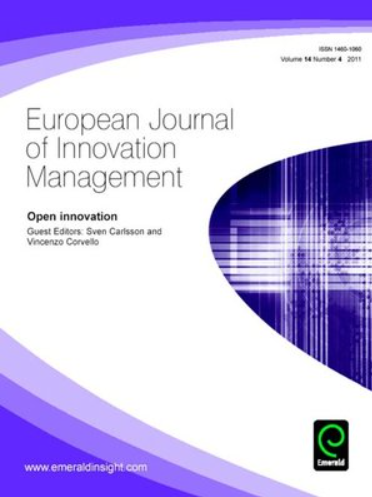与时俱进:数字化领导对制造企业激进绿色创新的影响研究
IF 5.7
3区 管理学
Q1 BUSINESS
引用次数: 0
摘要
为了实现可持续发展,激进的绿色创新(RGI)势在必行。尽管对绿色创新的影响因素进行了广泛的研究,但对绿色创新的前驱因素的研究却很少。基于上层梯次(UE)理论、动态能力(DC)理论、“刺激-有机体-反应”(SOR)理论、社会信息处理(SIP)理论和情感认知评价(CA)理论,本研究探讨了数字领导(DL)对RGI的影响,探讨了绿色组织认同(GOI)的中介效应、数字威胁(DT)和社会公益技术(TSG)的调节效应,以及触发高RGI的多重并行因果关系。本研究采用结构方程模型(SEM)和模糊集定性比较分析(fs - QCA)相结合的方法。在两个不同的时间点收集了233份问卷的数据。本研究结果表明DL的四个维度对RGI具有正向影响,GOI在DL的四个维度与RGI之间起到部分中介作用。DT在DL和GOI之间具有负向调节作用,而TSG在两者之间具有正向调节作用,DT和TSG联动调节了GOI在DL和RGI中的部分中介作用。在此基础上,利用QCA分析了深度学习维度和GOI到RGI的因果复杂性,确定了9条有效配置路径。研究发现,数字思维能力(DTA)、数字检测能力(DDA)、数字社交能力(DSA)、数字储备能力(DRA)和GOI的协同作用对高RGI至关重要。其中,GOI核心出现次数最多,说明GOI对企业RGI的提升起着至关重要的作用。本研究通过构建“DL-GOI-RGI”框架,拓展了领导力与创新的相关文献,探索了GOI的传递以及DT和TSG的边界效应。为了更好地理解连词和条件之间的统计关联和集合关系,本研究使用了QCA和SEM。本文章由计算机程序翻译,如有差异,请以英文原文为准。
Keeping pace with the times: research on the impact of digital leadership on radical green innovation of manufacturing enterprises
Purpose Toward sustainable development, radical green innovation (RGI) is necessary. Despite extensive research on the factors influencing green innovation, few studies have been conducted on the precursors. Based on upper echelons (UE) theory, dynamic capability (DC) theory, “stimulus-organism-response” (SOR) theory, social information processing (SIP) theory and cognitive appraisal (CA) theory of emotion, the study explores how digital leadership (DL) affects RGI and investigates the mediating effects of green organizational identity (GOI) and the moderating effects of digital threat (DT) and technology for social good (TSG), as well as the multiple concurrent causalities that trigger high RGI. Design/methodology/approach The method of combining structural equation model (SEM) and fuzzy-set qualitative comparative analysis (fs QCA) is adopted in the study. Data from 233 questionnaires were collected at two different time points. Findings This study's findings indicate that the four dimensions of DL can positively influence RGI and GOI partially mediates between the four dimensions of DL and RGI. DT has a negative moderating effect between DL and GOI, while TSG is positively regulated between them, DT and TSG linkage moderates the partial mediating effect of GOI in DL and RGI. Further, fs QCA is used to analyze the causal complexity of DL dimensions and GOI to RGI and nine effective configuration paths are identified. It is found that the synergy of digital thinking ability (DTA), digital detection ability (DDA), digital social ability (DSA), digital reserve ability (DRA) and GOI is crucial to high RGI. Among them, GOI core appears the most times, indicating that GOI plays a vital role in improving enterprise RGI. Originality/value This study expands the literature on leadership and innovation by constructing a framework of “DL-GOI-RGI” and exploring the transmission of GOI and the boundary effect of DT and TSG. The study used fs QCA and SEM to better understand the statistical associations and the set relations between the conjunctions and conditions.
求助全文
通过发布文献求助,成功后即可免费获取论文全文。
去求助
来源期刊
CiteScore
10.40
自引率
17.60%
发文量
107
期刊介绍:
The subject of innovation is receiving increased interest both from companies because of their increased awareness of the impact of innovation in determining market success and also from the research community. Academics are increasingly beginning to place innovation as a priority area in their research agenda. This impetus has been partly fuelled by the Economic & Social Research Council (ESRC) who have designated innovation as one of nine research areas in their research initiative schemes.

 求助内容:
求助内容: 应助结果提醒方式:
应助结果提醒方式:


